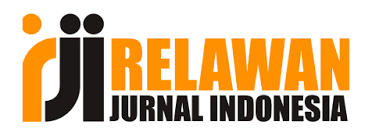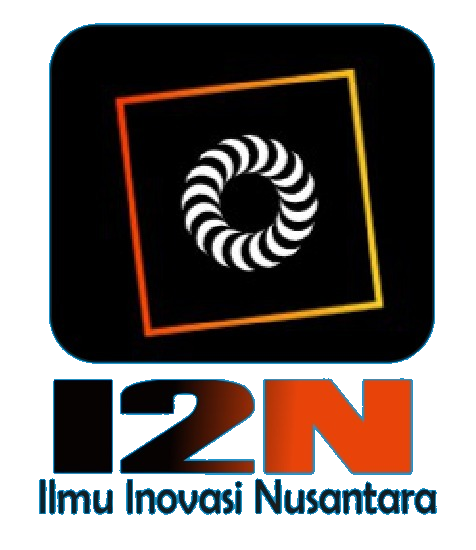An An In-Depth Examination of the Blended Teaching Mode: Integrating Online and Offline Approaches in Automotive Education
Keywords:
Online, Offline, Blended Learning, Automotive Course, Traditional Teaching, Modern TeachingAbstract
This study investigates the implementation and acceptance of blended teaching methods in automotive education at Liaocheng Vocational and Technical College. Blended teaching, which combines traditional face-to-face instruction with online learning activities. Using the quantitative approach. findings reveal that while teachers demonstrate strong competencies in technology integration and pedagogical adaptation, there is a need for further improvement in optimizing interactive learning and troubleshooting technical issues. Professional development participation is high, but a proactive engagement in innovative methodologies is required. Students show a high level of acceptance towards the blended teaching mode, with strong engagement in online materials and a positive response to peer collaboration. However, the findings also highlight a need for increased digital access and strategies to improve student self-discipline. No significant differences were found across age groups, gender, or year levels regarding feedback, online engagement, and peer collaboration, suggesting that other factors influence learning experiences. Additionally, gender disparities were noted in professional development participation and the overall implementation of blended teaching, with male teachers reporting higher engagement. The study concludes with practical recommendations for optimizing blended teaching strategies, enhancing teacher professional development, and improving student learning experiences through targeted interventions
References
An, X., & Wang, Q. (2021). The application of online and offline mixed teaching mode in the course teaching of “Tourism Planning and Development.” Hans, 11(05), 1711–1716. https://doi.org/10.12677/ae.2021.115266
Bouilheres, F., Le, L. T. V. H., McDonald, S., Nkhoma, C., & Jandug-Montera, L. (2020). Defining student learning experience through blended learning. Education and Information Technologies, 25(4). https://doi.org/10.1007/s10639-020-10100-y
Chang, C. C., Chen, K. Y., & Hou, H. T. (2020). Exploring the effectiveness of a hybrid teaching model in a vocational high school: A case study of a metalworking classroom. Eurasia Journal of Mathematics, Science and Technology Education, 16(3), em1820. https://doi.org/10.29333/ejmste/8195
Chen, H. H., Hsu, C. C., & Huang, Y. C. (2021). Implementing a hybrid learning model in vocational education: A case study of computer-aided design instruction. International Journal of Technology in Education and Science, 5(1), 44–58. https://doi.org/10.46328/ijtes.v5i1.109
Choi, S. K., & Kim, D. H. (2019). The effects of a hybrid teaching model on student engagement and learning outcomes: A case study in automotive engineering education. Journal of Engineering Education Research, 22(3), 179–191. https://doi.org/10.30930/jeer.2019.22.3.179
De Silva, D., & De Silva, A. (2020). Enhancing vocational education through hybrid learning: A case study of automotive technology training. International Journal of Vocational and Technical Education, 12(1), 15–30. https://doi.org/10.5897/IJVTE2020.0302
Epskamp, S., Stuber, S., Nak, J., Veenman, M., & Jorgensen, T. D. (2019). semPlot: Path diagrams and visual analysis of various SEM packages' output [R package]. Retrieved from https://CRAN.R-project.org/package=semPlot
Fang, Y., & Zhang, L. (2021). A comparative study of hybrid teaching models in vocational education: Lessons learned from automotive electronics courses. Vocational Education Research, 6(2), 25–35. https://doi.org/10.21307/ver-2021-002
Ford, J., & Turner, J. (2019). Blended learning in automotive education: Integrating online and hands-on instruction. International Journal of Automotive Technology and Management, 19(3), 272–289.
Gallucci, M., & Jentschke, S. (2021). SEMLj: jamovi SEM Analysis [jamovi module]. Retrieved from https://semlj.github.io/
Garrison, D. R., & Kanuka, H. (2004). Blended learning: Uncovering its transformative potential in higher education. Internet and Higher Education, 7(2), 95–105.
Graham, C. R., Woodfield, W., & Harrison, J. B. (2019). A framework for institutional adoption and implementation of blended learning in higher education. Internet and Higher Education, 42, 27–43.
Han, S. H., & Park, J. H. (2018). Applying a hybrid teaching model to automotive technology education: A case study of electric vehicle systems courses. Journal of Automotive Technology Education, 20(1), 55–68. https://doi.org/10.21558/JATE.2018.20.1.005
Johnson, L., Adams Becker, S., Cummins, M., Estrada, V., & Freeman, A. (2016). NMC Horizon Report: 2016 Higher Education Edition. The New Media Consortium.
Jorgensen, T. D., Pornprasertmanit, S., Schoemann, A. M., Rosseel, Y., Miller, P., Quick, C., Garnier-Villarreal, M., Selig, J., Boulton, A., Preacher, K., Coffman, D., Rhemtulla, M., Robitzsch, A., Enders, C., Arslan, R., Clinton, B., Panko, P., Merkle, E., Chesnut, S., Byrnes, J., Rights, J. D., Longo, Y., Mansolf, M., Ben-Shachar, M. S., & Rönkkö, M. (2019). semTools: Useful tools for structural equation modeling [R package]. Retrieved from https://CRAN.R-project.org/package=semTools
Kamble, P. L., Daulatabad, V., John, N., & John, J. (2022). An overview and analogy of pedagogical approaches in online–offline teaching tactics in COVD-19 pandemic. Journal of Education and Health Promotion, 11(1), 341. https://doi.org/10.4103/jehp.jehp_11_22
Kazdin, A. E. (2000). Psychotherapy for children and adolescents: Directions for research and practice. Oxford University Press.
Kim, B., & Bonk, C. J. (2020). Blended learning in automotive engineering education: A review of research and practice. International Journal of Engineering Education, 36(2), 841–856.
Lackey, W. M., & Simonds, R. (2019). Enhancing automotive education through technology integration: A case study of virtual laboratories. Journal of Automotive Technology and Management, 19(2), 130–146.
Lee, R. (1991). Modularisation and the curriculum: Flexibility and empowerment in teaching and learning. Journal of Geography in Higher Education, 15(2), 205–210. https://doi.org/10.1080/03098269108709152
Li, Y. (2022). Construction of online and offline hybrid courses—A case study of “Automobile Theory.” OALib, 09(09), 1–5. https://doi.org/10.4236/oalib.1109285
Li, Y., Zhang, R., & Yang, Y. (2021). Practice of distance online teaching of automobile theory. Open Access Library Journal, 8(1), 1–5. https://doi.org/10.4236/oalib.1106918
Liu, Y., & Yun, L. I. U. (2022). Research on the reform and innovation of online and offline hybrid teaching mode, 5(3), 41. Retrieved from http://www.cxcybjb.com/CN/abstract/abstract3941.shtml
Palvia, S., Aeron, P., Gupta, P., Mahapatra, D., Parida, R., Rosner, R., & Sindhi, S. (2018). Online education: Worldwide status, challenges, trends, and implications. Journal of Global Information Technology Management, 21(4), 233–241. https://doi.org/10.1080/1097198x.2018.1542262
Peng, X., & Wei, L. (2021). Exploration of online and offline hybrid teaching of pathophysiology. Open Journal of Social Sciences, 09(09), 433–438. https://doi.org/10.4236/jss.2021.99031
Picciano, A. G. (2019). Faculty development and technology integration: A review of empirical studies. Educational Technology Research and Development, 67(5), 1145–1167.
R Core Team. (2023). R: A language and environment for statistical computing (Version 4.3) [Computer software]. Retrieved from https://cran.r-project.org
Rosseel, Y. (2019). lavaan: An R package for structural equation modeling. Journal of Statistical Software, 48(2), 1–36.
Singh, R., & Singh, M. (2021). Enhancing automotive education through blended learning: A case study of hybrid teaching implementation. International Journal of Mechanical Engineering and Technology, 12(3), 113–127.
The jamovi project. (2024). jamovi (Version 2.5) [Computer software]. Retrieved from https://www.jamovi.org.
Downloads
Published
How to Cite
Issue
Section
License
Copyright (c) 2025 Yang Jiyong, Jesse Balinas

This work is licensed under a Creative Commons Attribution-ShareAlike 4.0 International License.














